| |
|
Xiamen Oil Paintings, Wholesale Direct!
|
|
100% hand painted, 100% cotton canvas, 100% money back if not satisfaction. |
|
|
|
|
ART WORKS INDEX
A
B
C
D
E
F
G
H
I
J
K
L
M
N
O
P
Q
R
S
T
U
V
W
X
Y
Z
|
|
ARTISTS INDEX
A
B
C
D
E
F
G
H
I
J
K
L
M
N
O
P
Q
R
S
T
U
V
W
X
Y
Z
|
|
|
|
|
|
|
|
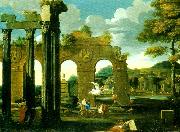 |
Thomas Blanchet
|
|
Thomas Blanchet (1614, possibly in Paris - 21 June 1689, Lyon) was a French painter, draughtsman, architect, sculptor and printmaker.
During his training in Paris Blanchet met Jacques Sarazin, and on his advice moved from studying sculpture to painting. During this time he familiarised himself with the Baroque and the School of Fontainebleau's Mannerism, new imports into Paris at this time. Among his probably co-students was Simon Vouet. He stayed in Rome from c.1645 to 1653 and worked with artists in Nicolas Poussin's circle, as well as visiting the studios of Andrea Sacchi and Pietro da Cortona. He was highly praised by Gianlorenzo Bernini, who he also visited. Blanchet produced paintings for Niccolo Guido di Bagno (1584 -1663), made engravings of ancient tombs and views or prospettive and a mausoleum for Rene de Voyer d'Argenson, French ambassador to Venice in San Giobbe, Venice (1654).
|
|
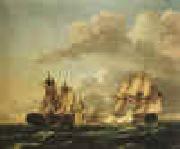 |
Thomas Birch
|
|
1779-1851
Thomas Birch Gallery
American painter of English birth. He was one of the most important American landscape and marine painters of the early 19th century. He moved to America in 1794 with his father William Birch (1755-1834), a painter and engraver from whom he received his artistic training. The family settled in Philadelphia, where William, armed with letters of introduction from Benjamin West to leading citizens of that city, became a drawing-master. Early in their American careers both Birches executed cityscapes, several of which were engraved. Thomas contributed a number of compositions to The City of Philadelphia in the State of Pennsylvania, North America, as it Appeared in the Year 1800 (1800), a series of views conceived by the elder Birch in obvious imitation of comparable British productions. An English sensibility is also apparent in the many paintings of country estates executed by father and son in the early 19th century (e.g. Eaglesfield, 1808; priv. col.). These compositions, along with such portrayals of important public edifices in and near Philadelphia as Fairmount Waterworks (1821; Philadelphia, PA Acad. F.A.), emphasize the cultural progress and commercial prosperity of the young United States as well as its almost Edenic natural beauty. Birch is also known for his representations of winter landscapes.
|
|
|
|
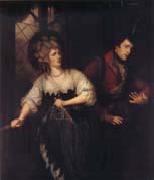 |
Thomas Beach
|
|
British Painter, 1738-1806,English painter. He studied with Joshua Reynolds from 1760 until early in 1762, during which time he was also a student at the St Martin's Lane Academy, London. He probably settled in Bath; his recorded portraits of the 1760s are all of sitters from Dorset or Somerset, and he sent two portraits from an address in Bath to the Society of Artists exhibition of 1772. He exhibited with the Society until 1783, becoming its vice-president (1782) and president (1783) he also exhibited at the Royal Academy (1785-90, 1797). He probably divided his mature practice between London and Bath. His early reliance on Reynolds's ideas of propriety gave way to a more direct approach, seen at its best in such group portraits as The Stapleton Family (1789; U. Bath, Holburne of Menstrie Mus.). In this work, the four children are shown in costume, as a fortune-teller and her customers. The theatrical element in Beach's work, reflecting his interest in the stage, is seen most strikingly in Sarah Siddons and John Philip Kemble in 'Macbeth' Act 2, Scene ii (1786; London, Garrick Club). Beach's diary for 1798, the only one to have survived, chronicles what appears to have been an annual tour of the west country; that year he completed 31 portraits between June and December. Beach was able to capture a strong likeness and this, despite a certain naivety and awkwardness in composition, was enough to establish his reputation in moderately fashionable provincial circles. His last recorded work is a Self-portrait
|
|
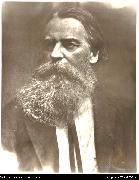 |
Thomas Baines
|
|
(27 November 1820 ?C 8 May 1875) was an English artist and explorer of British colonial southern Africa and Australia. Born in King's Lynn, Norfolk, Baines was apprenticed to a coach painter at an early age. When he was 22 he left England for South Africa aboard the "Olivia" (captained by a family friend William Roome) and worked for a while in Cape Town as a scenic and portrait artist, and as official war artist during the so-called Eighth Frontier War for the British Army.
In 1855 Baines joined Augustus Gregory??s 1855?C1857 Royal Geographical Society sponsored expedition across northern Australia as official artist and storekeeper. The expedition??s purpose was to explore the Victoria River district in the north-west and to evaluate the entire northern area of Australia in terms of its suitability for colonial settlement.
|
|
|
|
|
|
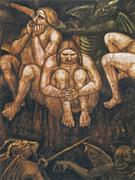 |
Taddeo di Bartolo
|
|
Italian Gothic Era Painter, ca.1362-1422
Italian painter. Taddeo, son of the barber Bartolo di Mino, was under 25 in 1386 when he was first recorded, painting statuettes of angels for the new choir-stalls in Siena Cathedral. In 1388-9 he was a counsellor to the Cathedral Works and in 1389 he was first listed as an independent painter. His earliest dated work is the polyptych of the Virgin and Child with Saints (1389; sold London, Christie's, 8 Dec 1950), painted for the chapel of S Paolo at Collegarli, near San Miniato al Tedesco.
|
|
|
|
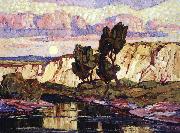 |
Sven Birger Sandzen
|
|
(5 February 1871-19 June 1954), known more commonly as Birger Sandzen, was a Swedish-American painter best known for his landscapes. He produced most of his work while working as an art professor at the Bethany College, Lindsborg, Kansas.
Sandzen was born in Blidsberg, Ulricehamn Municipality, Västra Götaland County, Sweden, the son of a Lutheran minister and his wife, an accomplished watercolorist. A protege of Anders Zorn, Sandzen showed an interest in art at from early age, and at the age of 10 joined Cathedral School (Katedralskolan) situated in Skara, to study art under the tutelage of Olof Erlandsson, a graduate of the Royal Swedish Academy of Arts. After graduating in 1890, Sandzen studied for a short time at the University of Lund before moving to Stockholm. It was his intention to enroll at the Royal Swedish Academy of Arts. However, the waiting list proved too long for him. Instead, he sought out and joined a group of young artists who were studying under Anders Zorn, Richard Bergh and Per Hasselberg. This group would later be known as the Artists League (Konstnärsförbundet).At the end of his studies, Zorn and Bergh recommended that Sandzen complete his painting studies in Paris. In 1894, Sandzen left Stockholm to study under Edmond Aman-Jean who introduced Sandzen to pointillism.
|
|
|
|
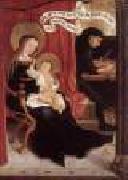 |
STRIGEL, Bernhard
|
|
German Northern Renaissance Painter, ca.1460-1528..Painter, son or nephew of Hans Strigel II. His training with Hans Striegel II shows stylistically in his early works in the Grisons, e.g. the Last Judgement (1486; Brigels, pilgrimage chapel of St Eusebius) and an altarpiece at Disentis (1489; St Johann Baptist). In the 1480s and 1490s he also worked in the studio of Ivo Strigel. Motifs in his pictures stem from engravings by Martin Schongauer and from Ulm book woodcuts. He met Bartholomus Zeitblom as a fellow worker on the high altar (1493-4) of Blaubeuren Abbey, both being influenced by Netherlandish art: Zeitblom by Rogier van der Weyden but Strigel primarily by Dieric Bouts. This influence is also seen in his Adoration of the Magi altarpiece (c. 1500; Memmingen, Stedtmus.). The altar of the Virgin for the monastery at Salem (1507-8; Salem, Schloss) has links with D?rer's graphic work: an increasing three-dimensionality and monumentalization of the objects and figures, and their disposition in space.
|
|
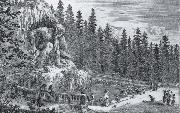 |
Stefano della Bella
|
|
Italian Baroque Era Printmaker, 1610-1664,was an Italian printmaker known for etchings of many subjects, including military ones. He was born at Florence, and apprenticed initially to a goldsmith, but became an engraver working under Orazio Vanni and then Cesare Dandini. He studied etching under Remigio Cantagallina, who had also been the instructor of Jacques Callot, who had lived in Florence 1612-1621, and whose prints imparted a strong influence to printmakers. The patronage of Don Lorenzo de Medici enabled della Bella to study for three years in Rome. In Rome, he created a then admired print of the cavalcade celebrating the entry of the Polish ambassador into Rome in 1633. He also created a number of prints of views of Rome. In 1642 he went to Paris, introduced by the Tuscan ambassador, Alessandro del Nero, and where he resided for seven years. Cardinal Richelieu engaged him to go to Arras and make drawings of the siege and taking of that town by the royal army. After residing a considerable time at Paris he returned to Florence, where he obtained a pension from the grand duke, whose son, Cosimo de Medici, he instructed in drawing. His productions were very numerous, amounting to over 1000 separate pieces. He is known to have illustrated some discoveries for Galileo. See entry for Hansken for his etching of the famous elephant after death. Wikimedia Commons has media related to: Stefano della Bella
|
|
|
|
|
|
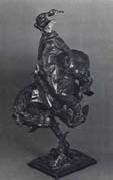 |
Solon H. Borglum
|
|
American Sculptor, 1868-1922,was an American sculptor. Born in Ogden, Utah, he was the younger brother of Gutzon Borglum and uncle of Lincoln Borglum of Mount Rushmore fame. The son of Danish immigrants who settled on the great plains, Solon Borglum spent his early years as a rancher in western Nebraska. Though he later lived in Paris and New York and achieved a reputation as one of America's best sculptors, it was his depiction of frontier life, and especially his experience with cowboys and native American peoples, on which his reputation was founded. Borglum studied under Louis Rebisso in Cleveland and in Paris. He specialized in depicting people and scenes of the American West. He moved to the Silvermine neighborhood of New Canaan, Connecticut, where he helped found the "Knockers Club" of artists. His brother, Gutzon, lived in nearby Stamford,
|
|
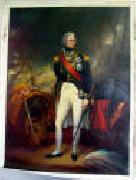 |
Sir William Beechey
|
|
1753-1839
British
English painter. He was trained as a lawyer before entering the Royal Academy Schools, London, in 1772. He is thought to have studied under Johan Zoffany, and his earliest surviving portraits are small-scale full-lengths and conversation pieces in Zoffanys manner (e.g. The Custance Conversation Piece, c. 1786; priv. col.). Beechey first exhibited at the Royal Academy in 1776. In 1782 he moved to Norwich, where he gained several commissions, but he was back in London by 1787. In 1789 he exhibited a portrait of John Douglas, Bishop of Carlisle (London, Lambeth Pal.) that is remarkable for its facility of handling. Beechey would occasionally paint similarly inspired works, but his career is marked by a succession of unflamboyant but competent portraits in the tradition of Joshua Reynolds.
|
|
 |
Sir Edward john poynter,bt.,P.R.A
|
|
1836-1919
English painter, draughtsman, decorative designer and museum official. He came from an artistic family: his great-grandfather was Thomas Banks the sculptor, and Ambrose Poynter, his father, was an architect and watercolour painter. Edward began studying art in 1852 under Thomas Shotter Boys, a friend of his father. In 1853-4 Poynter visited Rome, where he was greatly impressed by the large-scale academic painting of Frederic Leighton. Returning to London, he studied at Leigh's Academy and the studio of William Dobson (1817-1898). Poynter entered the Royal Academy Schools in 1855 but his admiration for French painting led him to Charles Gleyre's studio in Paris the following year. He remained there until 1859, with fellow students George Du Maurier, Thomas Armstrong and Whistler; their activities are described in Du Maurier's novel Trilby (1894). At this time Poynter received his first commissions for decorative work. He began designing stained glass and painting furniture and, after his return to England, he was employed by his friend the architect William Burges to decorate the ceiling of Waltham Abbey, Essex, in 1860.
|
|
|
|
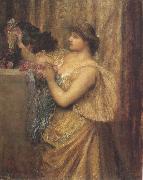 |
Sir edward coley burne-jones,Bt.,A.R.A.,R.W.S
|
|
1833-1898
English painter and decorative artist. He was the leading figure in the second phase of the Pre-Raphaelite movement. His paintings of subjects from medieval legend and Classical mythology and his designs for stained glass, tapestry and many other media played an important part in the Aesthetic Movement and the history of international Symbolism.
|
|
|
|
 |
Sir Edward Coley Burne-Jones
|
|
British Pre-Raphaelite Painter, 1833-1898
English painter and decorative artist. He was the leading figure in the second phase of the Pre-Raphaelite movement. His paintings of subjects from medieval legend and Classical mythology and his designs for stained glass, tapestry and many other media played an important part in the Aesthetic Movement and the history of international Symbolism.
|
|
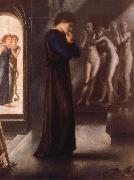 |
Sir Edward Burne-Jones
|
|
Britain 1833-1898
English painter and decorative artist. He was the leading figure in the second phase of the Pre-Raphaelite movement. His paintings of subjects from medieval legend and Classical mythology and his designs for stained glass, tapestry and many other media played an important part in the Aesthetic Movement and the history of international Symbolism.
|
|
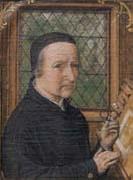 |
Simon Bening
|
|
Flemish Northern Renaissance Manuscript Illuminator, ca.1483-1561
was a 16th century miniature painter of the Ghent-Bruges school, the last major artist of the Netherlandish tradition. Bening was trained in his father Alexander Bening's miniature painting workshop in Ghent. He made his own name after moving to Bruges. His specialty was the book of hours, but by his time these were becoming relatively unfashionable, and only produced for royalty and the very rich. He also created genealogical tables and portable altarpieces on parchment. Many of his finest works are Labours of the Months for Books of Hours which are largely small scale landscapes, at that time a nascent genre of painting. In other respects his style is relatively little developed beyond that of the years before his birth, but his landscapes serve as a link between the 15th century illuminators and Peter Brueghel. His self-portrait and other portraits equally are early examples of the portrait miniature. He served as dean of the calligraphers, booksellers, illuminators, and bookbinders in the Guild of Saint John and Saint Luke. He created books for German rulers, like Cardinal Albrecht of Brandenburg, and royalty like Emperor Charles V and Don Fernando, the Infante of Portugal. The artistic tradition continued in his family. His eldest daughter, Levina Teerlinc
|
|
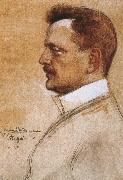 |
sibelius
|
|
Period: Modern (1910-1949)
Country: Finland
Born: December 08, 1865 in Hämeenlinna, Finland
Died: September 20, 1957 in Järvenpää, Finland
Genres: Chamber Music, Choral Music, Concerto, Keyboard Music, Miscellaneous Music, Orchestral Music, Symphony, Vocal Music
|
|
|
|
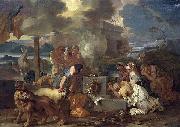 |
Sebastien Bourdon
|
|
(2 February 1616 - 8 May 1671) was a French painter and engraver. His chef d'œuvre is The Crucifixion of St. Peter made for the church of Notre Dame.
The Finding of Moses, c. 1650 (National Gallery of Art, Washington)Bourdon was born in Montpellier, France, the son of a Protestant painter on glass. He was apprenticed to a painter in Paris. In spite of his poverty he managed to get to Rome in 1636; there he studied the paintings of Nicolas Poussin, Claude Lorrain and Caravaggio among his eclectic selection of models, until he was forced to flee in 1638, to escape denunciation by the Inquisition for his Protestant faith. Bourdon's facility rendered him adept at portraiture, whether in a dashing Rubens manner or in intimate, sympathetic bust-length or half-length portraits isolated against plain backgrounds that set a formula for middle-class portraiture for the rest of the century, landscapes in the manner of Gaspar Dughet or cappricci of ruins, mythological "history painting" like other members of Poussin's circle or the genre subjects of the Dutch Bamboccianti who were working in Rome. His eclectic range of styles have given art historians exercise in tracing his adaptation of his models, while the lack of an immediately recognizable "Bourdon style" has somewhat dampened public appreciation.
In 1652 Christina of Sweden made him her first court painter. Bourdon spent most of his working career outside France, where, though he was a founding member of the Academie de peinture et de sculpture (1648), he was for long largely dismissed as a pasticheur, a situation partly rebalanced by a comprehensive exhibition in 2000 of his work at the Musee Fabre, where the collection includes a fine Lamentation painted in the last years of his life.
His success required the establishment of an extensive atelier, where, among his other pupils worked Nicolas-Pierre Loir and Pierre Mosnier. He died in Paris in 1671.
|
|
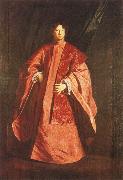 |
Sebastiano Bombelli
|
|
Italian, 1635-1719, Italian painter. He was perhaps the most influential Italian portrait painter of the later 17th century. His early style was formed by his father, Valentino Bombelli, a painter in Udine, and his godfather, the Mannerist artist Girolamo Lugaro. In the early 1660s he was in Venice (Boschini; Sansovino), where he responded passionately to the brilliant colour, painterly freedom and naturalism of 16th-century Venetian artists, particularly Veronese
|
|
|
|
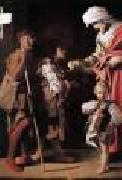 |
SCHEDONI, Bartolomeo
|
|
Italian painter, Emilian school (b. 1578, Modena, d. 1615, Parma)
Italian painter and draughtsman. He was the son of Giulio Schedoni, a mask-maker, who served the Este court in Modena and the Farnese in Parma; in 1598 Schedoni and his father are recorded as residing in Parma, both serving the court. In 1595 Ranuccio I, Duke of Parma, sent Bartolomeo to Rome, to train in the studio of Federico Zuccaro. Schedoni fell ill shortly after, however, and returned to Parma. His earliest surviving works show no evidence of Roman influence. The matter of Schedoni's training remains somewhat problematic. Carlo Cesare Malvasia claimed that he was a pupil of Annibale Carracci in Bologna, but there are reasons to doubt this. First, this would have been prior to Annibale's departure for Rome in 1595, a period when Schedoni was still apparently under his father's jurisdiction. Secondly, the early pictures indicate that initially his style was formed primarily by studying the work of Correggio in Parma. To a lesser degree he was influenced by the Parmesan culture of Parmigianino, Girolamo Mazzola Bedoli and Michelangelo Anselmi. As a boy in Parma he was also known to have frequented the studio of the Fleming Giovanni Sons (1547/8-1611).
|
|
|
|
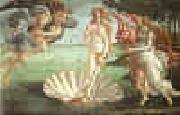 |
Sandro Botticelli
|
|
Italian Early Renaissance Painter, 1445-1510
Italian painter and draughtsman. In his lifetime he was one of the most esteemed painters in Italy, enjoying the patronage of the leading families of Florence, in particular the Medici and their banking clients. He was summoned to take part in the decoration of the Sistine Chapel in Rome, was highly commended by diplomatic agents to Ludovico Sforza in Milan and Isabella d Este in Mantua and also received enthusiastic praise from the famous mathematician Luca Pacioli and the humanist poet Ugolino Verino. By the time of his death, however, Botticelli s reputation was already waning. He was overshadowed first by the advent of what Vasari called the maniera devota, a new style by Perugino, Francesco Francia and the young Raphael, whose new and humanly affective sentiment, infused atmospheric effects and sweet colourism took Italy by storm; he was then eclipsed with the establishment immediately afterwards of the High Renaissance style, which Vasari called the modern manner, in the paintings of Michelangelo and the mature works of Raphael in the Vatican. From that time his name virtually disappeared until the reassessment of his reputation that gathered momentum in the 1890s
|
|
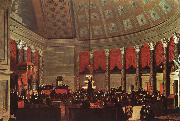 |
Samuel Finley Breese Morse
|
|
1791-1872
Samuel F.B. Morse was born on April 27, 1791 in Charlestown, Massachusetts, the first child of geographer and Pastor Jedidiah Morse (1761-1826) and Elizabeth Ann Breese (1766-1828). Jedidiah was a great preacher of the Calvinist faith and supporter of the American Federalist party. He not only saw it as a great preserver of Puritan traditions (strict observance of the Sabbath), but believed in its idea of an alliance with English in regards to a strong central government. Jedidiah strongly believed in education within a Federalist framework alongside the instillation of Calvinist virtues, morals and prayers for his son. After attending Phillips Academy in Andover, Massachusetts, Samuel Morse went on to Yale College to receive instruction in the subjects of religious philosophy, mathematics and science of horses. While at Yale, he attended lectures on electricity from Benjamin Silliman and Jeremiah Day. He earned money by painting. In 1810, he graduated from Yale.
Morse's Calvinist beliefs are evident in his painting the Landing of the Pilgrims, through the depiction of simplistic clothing as well as the austere facial features. This image captured the psychology of the Federalists; Calvinists from England brought to the United States ideas of religion and government thus forever linking the two countries. More importantly, this particular work attracted the attention of the famous artist, Washington Allston. Allston wanted Morse to accompany him to England to meet the artist Benjamin West. An agreement for a three- year stay was made with Jedidah, and young Morse set sail with Allston aboard the Lydia on July 15, 1811 (1).
Upon his arrival in England, Morse diligently worked at perfecting painting techniques under the watchful eye of Allston; by the end of 1811, he gained admittance to the Royal Academy. At the Academy, he fell in love with the Neo-classical art of the Renaissance and paid close attention to Michelangelo and Raphael. After observing and practicing life drawing and absorbing its anatomical demands, the young artist successfully produced his masterpiece, the Dying Hercules.
To some, the Dying Hercules seemed to represent a political statement against the British and also the American Federalists. The muscles apparently symbolized the strength of the young and vibrant United States versus the British and British-American supporters. During Morse??s time in Britain the Americans and English were engaged in the War of 1812 and division existed within United States society over loyalties. Anti-Federalists Americans aligned themselves with the French, abhorred the British, and believed a strong central government to be inherently dangerous to democracy.(3) As the war raged on, his letters to his parents became more anti-Federalist in their tones. In one such letter Morse said, "I assert that the Federalists in the Northern States have done more injury to their country by their violent opposition measures than a French alliance could. Their proceedings are copied into the English papers, read before Parliament, and circulated through their country, and what do they say of them... they call them (Federalists) cowards, a base set, say they are traitors to their country and ought to be hanged like traitors."
|
|
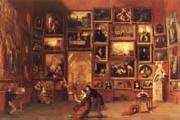 |
Samuel FB Morse
|
|
1791-1872,American painter and inventor. The son of a Calvinist minister, he began amateur sketching while a student at Yale College, New Haven, CT. After graduating in 1810, he returned to Charlestown, MA, to paint family portraits. In Boston in the same year he met Washington Allston, recently returned from Italy, under whose tutelage he executed his first history painting, the Landing of the Pilgrims at Plymouth (c. 1810-11; Boston, MA, Pub. Lib.). He joined Allston on his trip to London in 1811, enrolled in the Royal Academy Schools and also studied privately with Allston and Benjamin West. Morse Dying Hercules (1812-13; New Haven, CT, Yale U. A.G.), based on the pose and musculature of the Laokoon (Rome, Vatican, Mus. Pio-Clementino) and the theory evident in Allston Dead Man Restored to Life by Touching the Bones of the Prophet Elisha (1811-14; Philadelphia, PA Acad. F.A.), was critically acclaimed when exhibited at the Royal Academy and is indicative of Morse academic interests. After two trips in 1813 and 1814 to Bristol, where he painted a number of portraits and small subject pieces, Morse ended his period in England with another mythological history painting, the Judgement of Jupiter (1814-15; New Haven, CT, Yale U. A.G.).
|
|
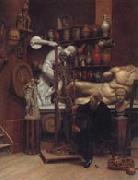 |
Samuel Butler
|
|
British author , (1835 - 1902)
Samuel Butler was born on Dec. 4, 1835, in Langar, near Bingham, Nottinghamshire, the son of the local vicar. In a time of common paternal absolutism, his childhood seems to have been bleak and graceless. After taking a degree at Cambridge, he came into open conflict with his father over the question of his future profession, and at last he emigrated to New Zealand to become a sheep farmer. But though free of his father, he was not free of revolt, and the spirit of resentful rebelliousness marked much of his later life. In New Zealand he read Charles Darwin's Origin of Species and wrote a series of newspaper articles setting forth Darwin's ideas and ingeniously applying the evolutionary hypothesis to machines. Having made a modest fortune, he returned to England in 1864. Erewhon (1872), Butler's first book, is a mixture of satire, utopian theories, and serious speculation masked as whimsy. Set in the frame of a trip to an unknown land (Erewhon is an anagram of "no-where"), it has no real plot but is rather a description and discussion of the customs and institutions of Erewhon. In this land moral failings are treated as mental illness and cured by a "straightener," but physical illness and misfortune are considered crimes and severely punished. Children sign certificates absolving their parents of responsibility for their birth, and education is carried on in the College of Unreason. Butler's reflections on orthodox religion, begun in New Zealand, issued in The Fair Haven (1873), an ironic attempt to reconcile the New Testament with rationalistic criticism. In Life and Habit he returned to the question of evolution. In Evolution Old and New (1879), Unconscious Memory (1880), and Luck, or Cunning? (1887), he developed his ideas with an increasingly self-righteous resentment of what he conceived to be the Darwinians' deliberate concealment of the truth. Butler hoped to be able to restore will, intelligence, and design to a universe apparently made meaningless by the blind process of natural selection. The novel The Way of All Flesh, Butler's most famous work, was written between 1872 and 1885. It is the supposed biography of Ernest Pontifex, narrated by an older friend with an unrelenting candor deliberately affronting conventional pieties.
|
|
|
|
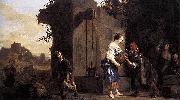 |
Salomon de Bray
|
|
(Amsterdam, 1597 - Haarlem, 11 May 1664) was a Dutch Golden Age architect and painter.
De Bray established himself in Haarlem before 1617, where he is registered as being a member of the schutterij that year in the St. Adrian's cloveniers.[1] He probably followed draftsmanship and painting lessons in the small academy started by Karel van Mander, Hendrick Goltzius and Cornelis van Haarlem, and where he married in 1625. He is registered as a pupil of Goltzius and Cornelis van Haarlem, but he probably started his training in Amsterdam with Jan Pynas, Nicolaes Moeyaert and Pieter Lastman.He painted history paintings, portraits and landscapes. As a Catholic he probably also made altar pieces for the Haarlem underground Catholic churches known as mission stations, or staties. He was a member of the Chamber of rhetoric called "De Wijngaertranken". This is probably how he met his wife Anna, the sister of the painter Jan and the poet Jacob Westerbaen. They married in 1625 and in 1630 he became a member of the Haarlem Guild of St. Luke. He cooperated with fellow Haarlem lukasguild member Jacob van Campen in the decoration of Huis ten Bosch in The Hague. His works draw on the spirit of the Dutch classicism beginning at that time, and are comparable with those of Pieter de Grebber.
Transcription of Salomon de Bray's proposed hierarchy of the guild in 1631. The Haarlem archivist C.J. Gonnet published a book in 1877 on the Haarlem St. Lukasgilde archives. This was meant for historians wishing to do research on Haarlem painting, but who could not read the old handwriting.De Bray was also active as a designer of silverwork, as a poet, as an architect and as a town planner for the city council of Haarlem. He designed an ambitious plan to expand the city on the North side that was partially implemented in the decades after his death. He became headman of the Guild of St. Luke and even prepared a new charter for the guild (that was never ratified) in 1631. As an architect, he was involved in the construction or expansion of Haarlem's City Hall, Zijlpoort, and St. Annakerk (Church of St. Anne), and Nijmegen's city orphanage. One of his poems was set to music by his friend the composer Cornelis Padbru??.
Salomon de Bray was the father of ten children, of whom three (Dirck de Bray, Jan de Bray, and Joseph de Bray) became notable artists. He probably died of the plague that hit Haarlem in 1664, as he and his children Jacob, Josef, Juliana and Margaretha all died in April and May of that year. His wife had already died the previous year. He was buried in the Sint-Bavokerk in Haarlem.
In 1631 Salomon de Bray wrote "Architectura Moderna" which provided a biography and descriptions of buildings built by Hendrick de Keyser, one of the key Dutch architects of the period
|
|
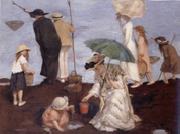 |
Rupert Bunny
|
|
Australian Painter, 1864-1947
Australian painter. After studying in Melbourne under G. F. Folingsby (d 1891), he moved to Europe in 1884 and studied in London under P. H. Calderon and in Paris under Jean-Paul Laurens, who introduced him to the Societe des Artistes Francais in 1887. His early works consisted mainly of mythological subjects and graceful images of pleasant Symbolist landscapes; he defected to the New Salon in 1901 and produced some less decorative works, including images of biblical subjects. A long series of paintings of women followed, but his style again changed abruptly when in 1913 he exhibited at the Salon d'Automne a series of images of dancers, The Rite, that shows the influence of Primitivism. Although not attracted to the avant-garde, Bunny showed an adventurous spirit in his unusual sense of colour, sense of rhythm and witty use of his subjects' poses. He continued to live in Paris and London until 1933.
|
|
|
|
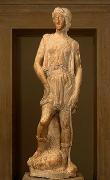 |
ROSSELLINO, Bernardo
|
|
Italian sculptor
Florentine school (b. 1409, Settignano, d. 1464, Firenze).Italian architect and sculptor. Influenced by Donatello, Filippo Brunelleschi, and Luca Della Robbia, he developed a moderately Classical style. His tomb for Leonardo Bruni (1444 C 50) in Santa Croce, Florence, was one of the greatest achievements of early Renaissance sculpture and inaugurated a new type of sepulchral monument. Its fine balance between sculpture and architecture, figure and decoration, made it the prototypical niche tomb of its time. He also designed the apse of St. Peter's Basilica and the cathedral and Piccolomini Palace in Pienza (1460 ?C 64). He presumably trained his brother Antonio (1427 ?C 79), who regularly assisted him.
|
|
 |
Rosa Bonheur
|
|
1822-1899 Realism,French,French painter and sculptor. She received her training from her father, Raymond Bonheur (d 1849), an artist and ardent Saint-Simonian who encouraged her artistic career and independence. Precocious and talented, she began making copies in the Louvre at the age of 14 and first exhibited at the Salon in 1841. Her sympathetic portrayal of animals was influenced by prevailing trends in natural history (e.g. Etienne Geoffroy Saint-Hilaire) and her deep affinity for animals, especially horses. Bonheur's art, as part of the Realist current that emerged in the 1840s, was grounded in direct observation of nature and meticulous draughtsmanship. She kept a small menagerie, frequented slaughterhouses and dissected animals to gain anatomical knowledge. Although painting was her primary medium, she also sculpted, or modelled, studies of animals, several of which were exhibited at the Salons, including a bronze Study for a Bull and Sheep .
|
|
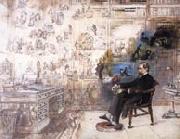 |
Robert William Buss
|
|
British painter and etcher , 1804-1875
was a Victorian artist, etcher and illustrator perhaps best known for his painting Dickens' Dream. Born in Bull and Mouth Street, Aldersgate in London in 1804, Buss served an apprenticeship with his father, a master engraver and enameller, and then studied painting under George Clint, a miniaturist, watercolour and portrait painter, and mezzotint engraver. At the start of his career Buss specialized in painting theatrical portraits, with many of the leading actors of the day sitting to him, including William Charles Macready, John Pritt Harley, and John Baldwin Buckstone. Later Buss painted historical and humorous subjects. He exhibited a total of 112 pictures between 1826 and 1859, twenty-five at the Royal Academy, twenty at the British Institution,
|
|
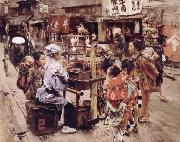 |
Robert Frederick Blum
|
|
Major figure painter and illustrator
American , 1857-1903
was an American artist born in Cincinnati, Ohio, on the 9th of July 1857. He was employed for a time in a lithographic shop, and studied at the McMicken Art School of Design in Cincinnati, and at the Pennsylvania Academy of Fine Arts in Philadelphia, but he was practically self-taught, and early showed great and original talent. He settled in New York in 1879, and his first published sketches of Japanese jugglers appeared in St. Nicholas. His most important work is a large frieze in the Mendelssohn Music Hall, New York, Music and the Dance (1895). His pen-and-ink work for the Century Magazine attracted wide attention, as did his illustrations for Sir Edwin Arnold's Japonica. "Man before grilled entrance"In the country and art of Japan he had been interested for many years. A Daughter of Japan, drawn by Blum and W. J. Baer, was the cover of Scribner's Magazine for May 1893, and was one of the earliest pieces of color printing for an American magazine. In Scribner's for 1893 appeared also his Artist's Letters from Japan. He was an admirer of Fortuny, whose methods somewhat influenced his work. Blum's Venetian pictures, such as A Bright Day at Venice (1882), had lively charm and beauty. He died on the 8th of June 1903 in New York City.
|
|
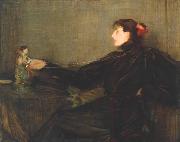 |
Robert Brough
|
|
(1872 - 21 January 1905) was a Scottish painter born in Invergordon, Ross and Cromarty.
He was educated in Aberdeen, and, whilst apprenticed for over six years as lithographer to Messrs Gibb & Co., attended the night classes at Gray's School of Art. He then entered the Royal Scottish Academy, and in the first year took the Stuart prize for figure painting, the Chalmers painting bursary, and the Maclame-Walters medal for composition.
After two years in Paris under J. P. Laurens and Benjamin-Constant at Julian's atelier, he settled in Aberdeen in 1894 as a portrait painter and political cartoonist. A portrait of Mr. W. D. Ross first drew attention to his talent in 1896, and in the following year he scored a marked success at the Royal Academy with his Fantaisie en Folie, which he bequeathed to the National Gallery of British Art (now the Tate gallery). Two of his paintings, Twixt Sun and Moon and Childhood of St. Anne of Brittany, were at the Venice municipal gallery. Brough's art was influenced by Henry Raeburn and by modern French training, but it strikes a very personal note.
Brough died from injuries received in a railway disaster in 1905.
|
|
|
|
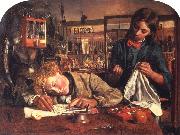 |
Robert Braithwaite Martineau
|
|
English genre and portrait Painter, 1826-1869
was an English painter. He first trained as a lawyer and later entered the Royal Academy where he was awarded a silver medal. He studied under Pre-Raphaelite artist William Holman Hunt and once shared a studio with him. He died at the age of 43. He married Maria Wheeler and had two children with her. His most famous painting, "The Last Day in the Old Home" portrays a man who has brought ruin upon his family and can be seen at the Tate Gallery in London. Other paintings were bequeathed to the Ashmolean Museum in Oxford and Liverpool Art Gallery by his daughter Helen. Other less well known paintings include "Kit's First Writing Lesson" and "Picciola".
|
|
|
|
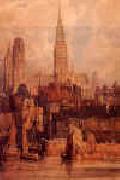 |
Richard Parkes Bonington
|
|
1802-1828
Richard Parkes Bonington Locations
English painter. His father, also called Richard (1768-1835), was a provincial drawing-master and painter, exhibiting at the Royal Academy and the Liverpool Academy between 1797 and 1811. An entrepreneur, he used his experience of the Nottingham lace-manufacturing industry to export machinery illegally to Calais, setting up a business there in late 1817 or early 1818. In Calais the young Richard Parkes Bonington became acquainted with Louis Francia, with whom he consolidated and expanded whatever knowledge of watercolour technique he had brought with him from England. Under Francias direction Bonington left Calais for Paris where, probably not before mid- or late 1818, he met Eugene Delacroix. The latters recollection of Bonington at this time was of a tall adolescent who revealed an astonishing aptitude in his watercolour copies of Flemish landscapes. Once in Paris Bonington embarked on an energetic and successful career, primarily as a watercolourist. In this he was supported by his parents who sometime before 1821 also moved to Paris, providing a business address for him at their lace company premises.
|
|
|
|
|
|
|
|
|
| Wholesale China Oil Painting Wholesale Oil Painting China Xiamen Portrait Reproduction on canvas Chinese Oil Painting Wholesale USA Oil Painting |
|
|
|
|
|